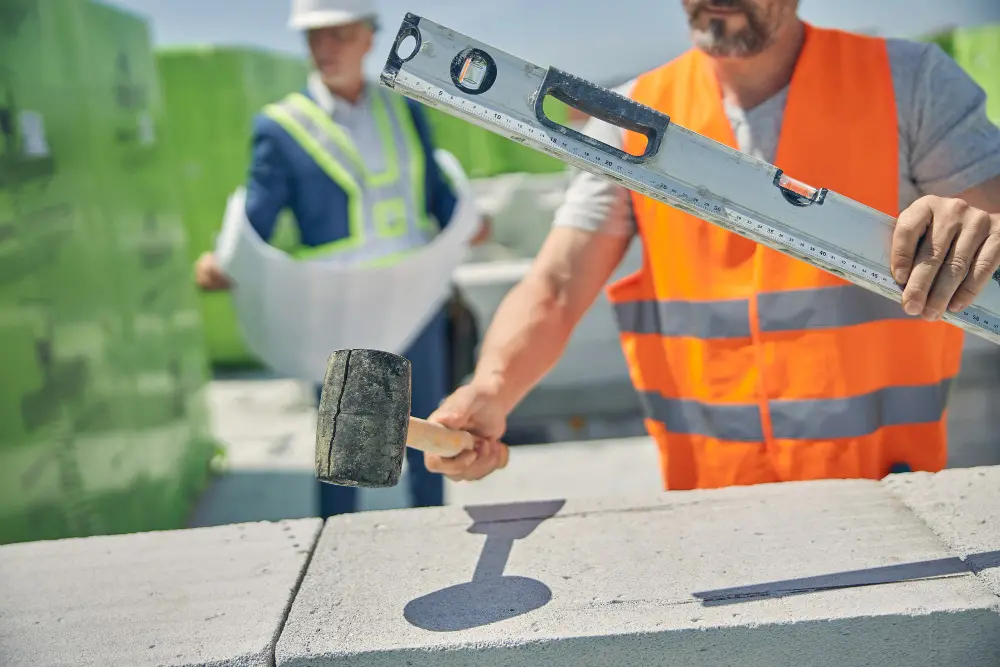Advancements in technology have brought so much creativity and innovation to concrete designs. Here comes the role of concrete design masters. They have embraced the technology very well and opened new possibilities for concrete structures that were impossible with traditional concrete. Their planning and creativity turn raw concrete into works of art.
If you are excited to know about those techniques, continue reading this blog…
Top Innovative Techniques Concrete Design Masters Use

Let’s throw light on the innovative techniques by which concrete design masters are converting their visionary creations to reality.
1. 3D Printed Concrete
Did you know that traditional models and formwork are no longer needed in concrete design? Yes, it is true, as 3D printing technology has replaced them.
3D-printing concrete allows design masters to create complex geometry and tailor designs according to the client’s needs. Moreover, this technique has no labor cost or construction waste, making concrete structures more efficient and visually appealing.
2. Self-Healing Concrete
Another groundbreaking innovation in the construction field is self-healing concrete, which has the power to mitigate damage over time.
Concrete masters have created this concrete by exploring different self-healing mechanisms, such as bacteria-based systems and healing agents. Thus, whenever the concrete surface is exposed to moisture or any other trigger, it can repair itself quickly.
This innovative concrete reduces the maintenance cost and increases the lifespan of your concrete structures.
3. Ultra High-Performance Concrete
As the name suggests, the strength of ultra-high-performance concrete is far beyond that of conventional concrete. Concrete meters prepare it using advanced mix designs and adding specialized additives, which boosts the stability and performance of concrete.
Using this type of concrete, you can construct lightweight structures that do not require a lot of material. Moreover, ultra-high-performance concrete has a faster curing time and is more resistant to environmental factors like corrosion and abrasion.
4. Digital Fabrication
Advanced digital fabrication technologies have also revolutionized concrete designs. Design masters use different algorithms and computational tools to create their desired designs. They prioritize achieving efficiency in basic parameters like structural performance and aesthetic looks of a property.
Moreover, this innovation has increased collaboration between architects, engineers, and stakeholders. Everyone can share information and designs in real-time and coordinate more effectively. All of this results in a successful outcome for your concrete project.
5. Fiber-Reinforced Concrete
Design masters are using fiber-reinforced concrete to create lighter and more crack-resistant structures. They strategically incorporate fibers into concrete mixes to minimize the cracks or structural damage risk.
This is mainly used in long-span bridges and cantilevered roofs where regular concrete can not work effectively. Engineers are continuously exploring new types of fibers and combinations to enhance the mechanical properties of concrete structures.
6. Transparent Concrete
Different types of transparent materials are incorporated into this concrete to allow light to pass through it. This has a transformative impact on architecture, improving the aesthetics and functionality of concrete surfaces. It also enhances lighting in buildings and is an excellent way of saving energy.
Today, transparent concrete is commonly used to decorate interior spaces and create luminous environments. Thus, maintaining transparency and security is a beautiful innovation for concrete design masters.
7. Carbon-Negative Concrete
Concrete masters have also adopted many sustainable practices. One of the most significant is the use of carbon-negative concrete. This concrete reduces carbon emissions during construction and sequesters atmospheric carbon dioxide. This results in the removal of greenhouse gasses and has a very positive impact on our climate.
8. Nanotechnology In Concrete
Nanotechnology has revolutionized the construction industry and promises a bright future. In concrete mixes, design masters incorporate nanotubes and nanoparticles to increase their functionalities. These nanoparticles efficiently fill all the gaps between cement particles, resulting in stronger and denser concrete.
Also, nanotechnology has introduced smart concrete sensors that monitor a structure’s structural performance and strength and provide real-time data. This is how concrete masters get insights and implement preventive measures promptly.
Conclusion
We hope you have enjoyed a glimpse of innovation in concrete technology. Concrete design masters are continuously unlocking new opportunities to bring more creativity and efficiency to concrete designs, and this innovation will continue to evolve for the coming decades.
However, before starting any construction project, it is always recommended that you consult concrete design masters from a well-reputed company like PGH Concrete Masters to get the best results.

 Concrete Masters
Concrete Masters 